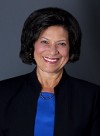By Marilyn M. Singleton, MD, JD
The high cost of medical care is on the lips of every politician and draining the pocketbooks of most Americans. After creating the Medicare/Medicaid monster, the government’s expanded intervention into the medical care marketplace with the inaptly named Affordable Care Act doubled the premiums and deductibles for both employer-sponsored and individual insurance. Piling on more laws, regulations, and agencies is not the answer.
Anonymity, complexity, and opacity invite shady behavior. Individuals, companies, and patients who defraud the massive federal “health system” would never dream of lifting money from their patients’ wallets or stealing from their doctors’ cash drawer.
The government’s track record does not bode well for imposing more bureaucracy to remedy a problem created by the layers of third-party payer bureaucracy. Waste, fraud, and abuse are so rampant that the government has a Medicare Strike Force to root out and recover lost federal funds. Medicare fraud—about $60 billion in 2016 alone—is about 10 percent of Medicare’s total payments. By contrast the typical private business loses 5 percent of its revenues to fraud. Unfortunately, since its inception in March 2007, the Medicare Strike Force has recouped less than $2 billion per year in misappropriated funds.
Medicare’s $16.7 billion per year hospice program is fertile ground for the unscrupulous. Hospices are paid a fixed daily sum for each patient enrolled “regardless of the services provided.” One amoral scheme recruits patients who unknowingly forgo curative treatment options by joining hospice. A recent Office of Inspector General (OIG) report revealed that in 2012 hospices billed Medicare more than $250 million for services to patients in long-term care or assisted-living residences who did not require hospice care, costing four times more than the appropriate level of care. Even worse, the OIG found that the quality of care suffered in 31 percent of programs. The bureaucratic morass allows the perpetrators to pocket the fixed fee and skimp on the services.
Further, the government cannot keep track of its program dollars. According to another OIG audit, in 2009, Medicare Prescription Drug program paid $33.6 million and hospice patients paid $3.8 million for medications that should have been included in the hospice daily fee. Even after discovering the snafu, the problem got exponentially worse. In 2016 the government paid $160.8 million for drugs that hospice organizations should have paid for from its fixed daily fee. Our tax dollars paid for the drugs twice.
Physicians know what patients want and are acting on it. Free from the restraints of government “healthcare” programs, the physician-led, price-transparent, direct-pay Surgery Center of Oklahoma performs some surgeries for less than the copays of some insurance policies. Direct Primary Care physicians provide 24/7 access and basic labs for as little as $50 per month with at-cost medications and low-priced x-rays.
The corporate private sector has learned a thing or two from innovative physicians. Care Accelerator is Sam’s Club’s version of “affordable [medical care] options with transparent pricing.” To offer relief from high out-of-pocket costs, $50 (individual) to $240 per year (families) buys access to lab screening for diabetes and heart disease, free generic drugs, telehealth, and up to a 30 percent discount on vision, dental, and other ancillary services. Additionally, Walmart is training its own employees for jobs in the health sector and ideally to staff Walmart’s own medical services. For their employees, Apple has “health care built around you” with its AC Wellness that offers office and home visits; Amazon launched its Amazon Care telemedicine services.
Given the outrageous price of drugs—largely due to the pharmacy benefit manager middlemen—Good Rx discount coupons are just what the doctor ordered. Good Rx is free to the consumer and makes money from advertisements on the website and referral fees. One typical victory is a Medicare patient whose neurologist prescribed a drug for his Parkinson’s disease symptoms. The government demanded testing that could not be done because of the patients debilitated condition. Despite a sympathetic ear and supporting research, the government arbiter could only parrot the party line: because the drug was not on the “list,” it was not covered by Medicare. In a fortunate twist of fate, with a Good Rx coupon the patient paid $34 per month cash instead of the drug’s $1,100 per month price with 20 percent patient co-pay that would have been charged through the Medicare Prescription Drug program.
Congress claims it plans a full-frontal attack on the high cost of medical care (with the same results as the war on poverty and drugs?). Frankly, we are better off with Congress engrossed in its impeachment clown show and keeping its nose out of our medical business.
Bio: Dr. Singleton is a board-certified anesthesiologist. She is Immediate Past President of the Association of American Physicians and Surgeons (AAPS). She graduated from Stanford and earned her MD at UCSF Medical School. Dr. Singleton completed 2 years of Surgery residency at UCSF, then her Anesthesia residency at Harvard’s Beth Israel Hospital. While still working in the operating room, she attended UC Berkeley Law School, focusing on constitutional law and administrative law. She interned at the National Health Law Project and practiced insurance and health law. She teaches classes in the recognition of elder abuse and constitutional law for non-lawyers.







